Middlesex Day is celebrated each year on 16th May. This commemorates the actions of the 57th (West Middlesex Regiment) at the battle of Aluera (1811) during the Peninsula War. During the battle, Lieutenant-Colonel William Inglis, despite his injuries, refused to retire from the battle but remained with the regimental colours, encouraging his men with the words “Die hard 57th, die hard!”. The regiment held, the battle was won and the phrase Die Hard entered the language. We present our portrait of Middlesex. A Map of the Middlesex is also provided.
Middlesex in an inland county in the south-east of England. Despite being the most urban of all the counties, Middlesex does still have significant areas of countryside.
In the far north-west of Middlesex, the village of Harefield, with its famous hospital and the beautiful St Mary’s Church, lies among farmland, woods and important wetland and grassland habitats along the River Colne (the border with Buckinghamshire). This area is flanked east and south by two former villages grown to suburban towns: Northolt, whose suburban developments stretch across into Hertfordshire, and by Ruislip, still clustered around its ancient village centre.
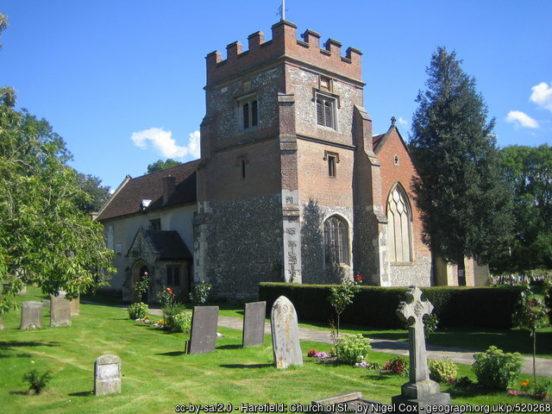
East from Northolt, the county border runs through a long stretch of countryside, including Harrow Weald Common and Stanmore Common, as far as Finchley. The towns in this northern part of the county include Pinner, Stanmore and Edgware – all former villages grown into suburban towns. Mill Hill remains a village. Finchley is predominantly a suburban, residential town with three distinctive town centres. North of Finchley, is the village of Whetstone.
To the east of Finchley, a spur of Middlesex extends northwards. In this spur lie the suburban towns of Wood Green, Edmonton, Southgate, Enfield and Cockfosters. This spur stretches east to the border with Essex (the old course of the River Lea). At its northern extent is Rammy Marsh and the hamlet of Bulls Cross. The spur extends westwards creating a “crook” around the part of Hertfordshire containing High Barnet and Totteridge. This northern “crook” contains the county’s largest area of countryside. At its western end are the town of Potters Bar and village of South Mimms. Morven Park (NT) lies in the north of Potters Bar. The village of Hadley Wood lies in the south of this rural area, close to the neo-Palladian Wrotham Park Estate, with its landscaped park and gardens.
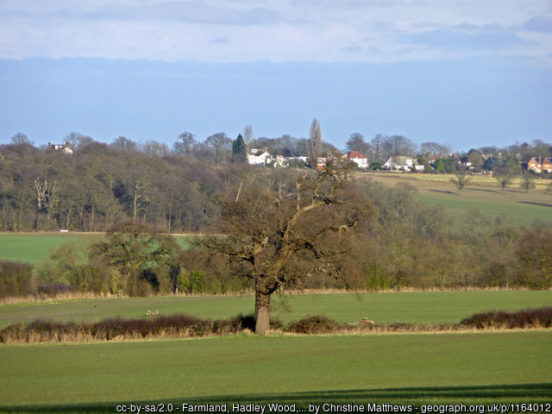
South of Rusilip, on the western border, lies the town of Uxbridge, scene of several historical events including attempted negotiations between King Charles I and the Parliamentary Army during the Civil War. The nearby village of Ickenham contains Swakeleys House, built in 1638 for the future Lord Mayor of London, Sir Edmund Wright. Close to is Hillingdon, rural village grown to suburban town. Hillingdon Court Park provides welcome green space.
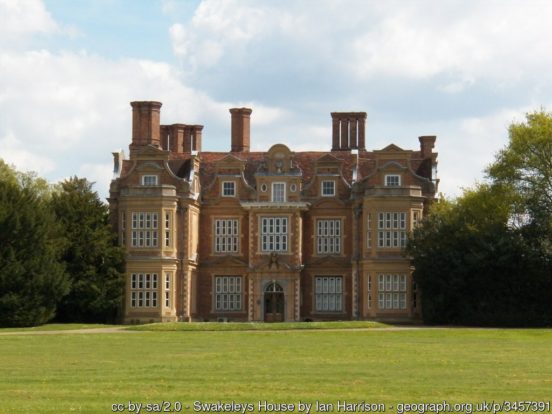
South of Hillingdon is Yiewsley and, further south, West Drayton, a town which grew from its connections with the railway and canal networks, as did nearby Hayes. Much of the the western border in this area comprises wetlands along the Rivers Colne and Frays.
South of West Drayton, the county becomes more rural again around the villages of Harlington, Sipson and Hardmondsworth, with its famous 15th-century Great Barn (EH). Hardmonsworth Moor hugs the county border. South of this area lies Heathrow Airport, built on the site of the former hamlet of Heath Row, demolished in 1944, though the name was only attached to the airport in 1966.
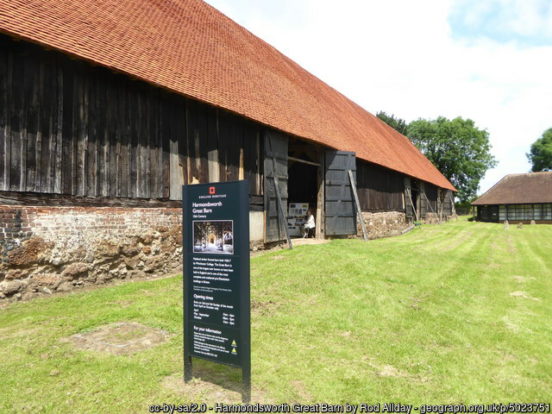
The south-west of Middlesex is an area of villages and small towns set amongst countryside, parkland and several large reservoirs (Wraysbury, King George VI, Staines and Queen Mary). The reservoirs, along with the Staines Moor flood meadows, are internationally important wildlife habitats. Staines-upon-Thames lies at a point on the river where there has been a crossing since Roman times. Ashford has Anglo-Saxon origins. Stanwell has the 12th-century St Mary’s Church. Sunbury-on-Thames was described by the Rev Gilbert White as “One of those pleasant villages lying on the Thames”, a sound judgement to this day. The Thames-side village of Laleham contains Laleham Park and Laleham Abbey. The poet Matthew Arnold lived and is buried here. Nearby is Shepperton and the world-famous Shepperton Film Studios. Further east is the village of Hampton and, east of that, is Hampton Court Palace, a magnificent Tudor royal palace. Hampton Court Park and Bushey Park form a vast green expanse in this part of Middlesex.
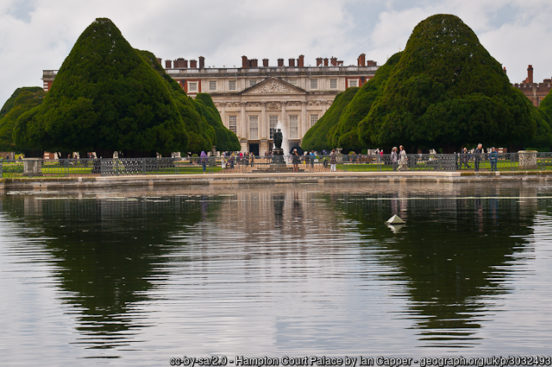
Alongside the Thames as it flows northwards lie the villages of Hampton Wick and Teddington, then Twickenham, famous as the home of Rugby Union. The historic riverside area is famous for its network of 18th-century buildings and pleasure grounds. Isleworth is a charming village by the Thames. To its west is the major Middlesex town of Hounslow. Where the Thames starts to turn east, aside the Brent River as it meets the Thames, is Brentford, sometimes considered the county town. Syon Park lies alongside the Thames here. Syon House, with its famed interiors by the architect Robert Adam, is the residence of the Duke of Northumberland. Osterley House (NT), just west of Brentford, was one of a group of large houses close to London which served as country retreats for wealthy families. Brentford Dock is a marina and housing estate.

As the Thames flows east there lies the quiet Middlesex town of Chiswick. Chiswick House lies south of Chiswick High Road, itself part of the original road from London to Bath.
Away from the Thames, western Middlesex contains many notable towns. Harrow on the Hill is a village rich in historic architecture and the location of famous Harrow School. The Hill is a well-known Middlesex landmark with the spire of St Mary’s soaring skywards being visible for many miles. Wembley is home to the famous Wembley Stadium and to Wembley Arena. Ealing is a large suburban town, centred on Ealing Broadway. Southall is located on the Grand Union Canal and a major centre of South Asian culture, having gained the nickname “Little India”. Greenford is considered to be birthplace of the modern organic chemical industry, as it was at William Perkin’s chemical factory, by the Grand Union Canal, that the world’s first aniline dye was discovered in 1856. Hanwell contains the Wharncliff viaduct, built by Brunel to carry the GWR across the River Brent.

Aside from its northern section, eastern Middlesex is the most urban part of the county. This is the heart of the Metropolis with the cities of London and Westminster at its centre, the former housing the financial institutions of the kingdom and the latter its social, cultural and political institutions, and of course the top shops. In popular usage though, the term “London” refers to an area much bigger than the City itself. Whilst it’s a subjective matter what part of the metropolitan conurbation is “London”, it is a fact that all of it north of the Thames and west of the Lea lies in Middlesex.
To the west of central London, Hammersmith stands on the north bank of the Thames next to Hammersmith Bridge. Fulham also stands on the Thames, once a working class area, today it is among the most affluent in the country. Chelsea is an affluent town on the Thames. Its frontage runs from Chelsea Bridge along the Chelsea Embankment, Cheyne Walk, Lots Road and Chelsea Harbour. North of these is the affluent district of Kensington. Kensington Gardens contains the Albert Memorial, the Serpentine Gallery and Speke’s monument. South Kensington is home to the Royal Albert Hall, Natural History Museum, Victoria and Albert Museum, and the Science Museum.
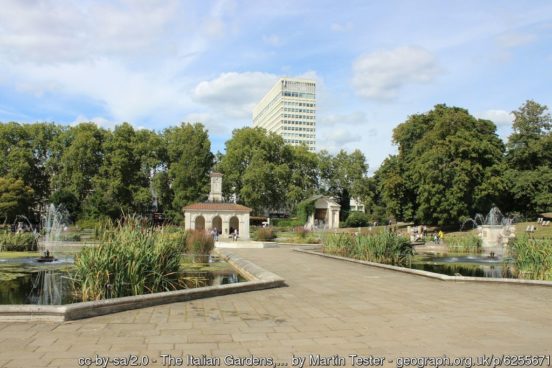
St John’s Wood is an affluent district and is the location of Lord’s Cricket Ground, home of Middlesex County Cricket Club. Nearby, Kilburn has its origins in a 12th-century priory on the banks of the Kilburn Brook. Further north, Golders Green was a mediæval hamlet, grown to 19th-/20th-century suburb, known for its Jewish community. “Brent Cross” was originally the name of a crossroads between Golders Green and Hendon. Nowadays the crossroads is the “Brent Cross Flyover” and the Brent Cross Shopping Centre lies alongside. Hendon was at the heart of aviation development. Hendon Aerodrome is now an RAF museum.
Hampstead is a wealthy district set below Hampstead Heath, a famous public space with bathing pools and fine views over the metropolis. Fenton House (NT) is a 17th-century merchant’s house. Nearby Highgate, formerly a distinct village, is now a wealthy suburb with many green expanses. Camden Town is well known for Camden Town Market. The fashionable district of Islington began as a village along the current High Street.
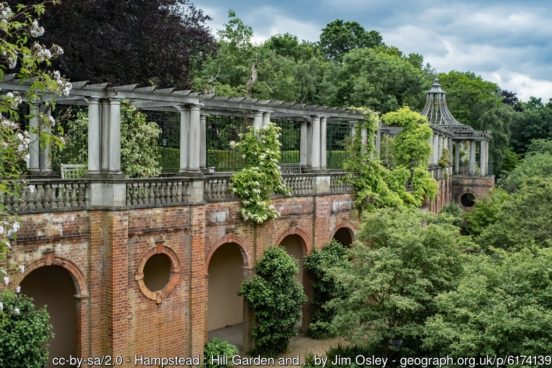
In the east of the county, the town of Tottenham grew up along the old Roman road, Ermine Street. To the south is Harringay, a former village grown to suburban town. Stoke Newington, “Stokey” to locals, has an historic core around Church Street which retains its village character. Hackney is a large town, but still mirroring the area of the ancient parish of Hackney, the largest Middlesex parish.
The East End of London is also the far south-east of Middlesex. Shoreditch is a town built around its High Street and church. Shoreditch Town Hall is a local landmark. Whitechapel was the location of infamous Whitchapel murders (1888-91). Limehouse is a district by the Thames, with a strong maritime flavour. Mile End stretches along the ancient route east out of the City of London.
In the far south-east of Middlesex lies the Isle of Dogs, a large peninsula bounded on three sides by a large meander in the River Thames, formerly a major docks and now best known as the location of the Canary Wharf office complex: a world away from the rural landscape of the north-west.
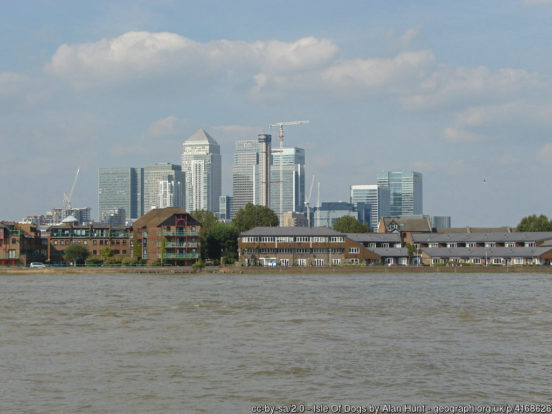
The Romans were responsible first development of Middlesex, for while their Londinium was almost certainly on an existing town site, they effectively founded London, on the site of today’s City. The Romans built roads out of London all across what became Middlesex and villas appeared. Ad Pontes at Staines was a major Roman bridging point. The Saxons colonised the area from the 5th-century. The earliest written record of the county’s name, as ‘Middelseaxan’, is in a charter of 704. The name, meaning ‘middle Saxons’ relates to its position between the East and West Saxons. Middlesex was dominated by the City of London from its earliest times, for centuries being the county retreat of royalty and wealthy London merchants. By the late 19th-century the urban area around London had grown to cover a large part of the south-east of Middlesex. Nonetheless, despite 20th century urban expansion and infill, the pattern and identities of Middlesex’s town and villages largely remains, especially in the north and west of the county.
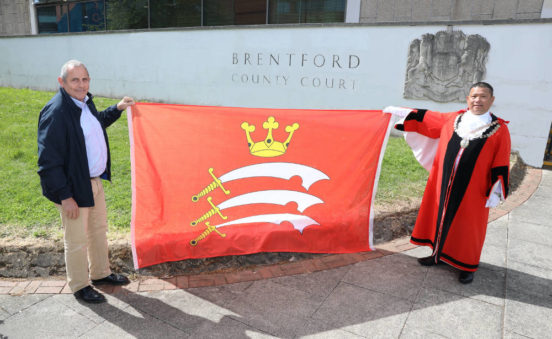
The Middlesex Flag comprises three gold hilted, white seaxes on a red background with a Saxon crown above them, emblems which have been associated with the county for centuries.

